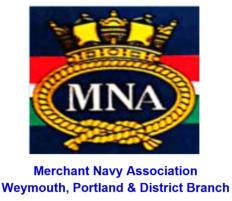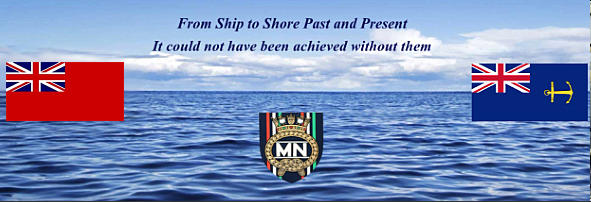


WEYMOUTH AT WAR
MTB Propaganda Film
Made in 1945, THE BROAD FOURTEENS is one of the excellent, dramatized accounts of WWII made by the Ministry of
Information for morale purposes. The film shows the first posting, and eventual first action, of a newly-trained motor torpedo boat
(MTB) crew. ('The Broad Fourteens' is the name given to a patrol area of the North Sea off the Dutch coast.) The film joins the boat
and crew at the end of their training (probably HMS Bee, the Coastal Force working up base at Weymouth). The boats featured
include 70’ Vosper 1942 class boats, 70’ British Power Boat motor gunboats and MTB 210 — a J Samuel White-built 70’ Vosper
which later joined the 13th MTB Flotilla at Dover. The fictional MTB 181 is probably MTB 352, commanded by Lieutenant John M
Moore RNVR which joined the 11th MTB Flotilla at Felixstowe after completing her work up. Also featured is MTB 354, commanded
by Lieutenant Roland Plugge RN which was the SO's boat, 5th MTB Flotilla, at Dover. The German flak trawler is in fact an RN
Isles Class trawler standing in.
To view the film “Broad Fourteens” - click here
COSENS & Co. Ltd
Cosens of Weymouth was founded in 1848 by Captain Joseph Cosens, who was born in Weymouth in 1816. Cosens chartered a
steamer to provide a regular Portland ferry service and occasional coastal excursions, the income from which persuaded him to buy
a steamer of his own. From 1848 until 1967, operating from their home port and seasonal bases at Swanage and Bournemouth,
their paddle steamers offered an extensive range of summer excursions: westwards to Torquay and Dartmouth, calling at the open
beaches of Lyme Bay en route; eastwards to the Solent, Isle of Wight and beyond; and even across the English Channel to
Cherbourg and Alderney.
They also transported convicts from Southampton to Portland to work on the building of Portland Harbour in the mid-19th century
During the First and Second World Wars steamers were requisitioned to serve as minesweepers. The Emperor of India took part in
the evacuation of Dunkirk and Cosens’ ships and workers were also involved with D-Day.
Leading employers in Weymouth, they also ran a ship repair and engineering business, as well as salvage and speedboat
operations, and even an ice- making plant. Changing economics and holiday habits after the second world war brought a gradual
decline and the last paddle steamer, Embassy, was withdrawn in 1966. The Harbour Masters Office still bears the ‘Cosens
Engineers’ mark on the steel supports.
In the years before the First World War, the company was locked in spirited competition with rival steamer operators, its tugs involved
in numerous dramatic rescues and salvage jobs, and the smaller vessels kept busy day and night ferrying liberty men ashore from
the naval Fleet in Portland Harbour or carrying supplies to the breakwater forts. In addition, Cosens operated a major engineering
and ship repairing business and were involved in the diving, coal and block-ice trades.
History
Joseph Cosens, about 1870
[1]
The company was founded in 1848 by Joseph Cosens and incorporated in 1876. It operated a fleet of paddle steamers on excursions along the south
coast of England and on cross channel trips to Cherbourg and Alderney. It also operated a number of launches offering "trips round the bay" as
well as tugs serving ships using Weymouth harbour. Up to the end of World War I the company held the Admiralty contract to operate liberty
boats for naval ships at Portland. The engineering side of the company was a major ship repair and marine engineering facility. The company
also had a cold storage and ice-making facility adjacent to the port.
In 1851 Joseph Cosens was operating the steamer Princess between Weymouth and Portland, when he found that a rival organisation, the
Weymouth & Portland Steam Packet Company, owned by Philip Dodson, intended placing its own steamer Contractor on the same route.
Cosens' response to this was to expand the company by going into partnership with wealthy local newspaper proprietor, Joseph Drew, in order to
obtain a new ship. The new ship, named Prince, was designed and built by John Scott Russell, famous later as the builder of the ill-fated Great
Eastern
Joseph Cosens died at the end of 1873 and Joseph Drew became chairman.
In 1946 Cosens was taken over by its Southampton based rival Red Funnel which continued to operate the pleasure steamers, in conjunction
with its own, until 1966 when the last surviving paddle steamer was withdrawn from service. The engineering division continued however, finally
being sold in a management buy-out in 1990. Renamed Cosens Engineering Ltd it had a brief independent career that ended in receivership.
The Fleet
PS EMBASSY
Built in 1911 by D & W Henderson at Glasgow (yard no 475)
Length: 190 ft - Breadth 26.1 ft (57.9 x 7.95 metres)
Engines: Compound Diagonal 27 and 51 x 54 in by builders)
Built in 1911 for the railway connection service from Portsmouth to
Ryde as PS Duchess of Norfolk
Launched 25/7/1911
Served as a minesweeper in the Mediterranean Sea in World War I
(1916-1920) as HMS Duchess of Norfolk
Sold to Cosens & Co.’s Weymouth-based South Coast cruising
operation in 1937 and renamed PS Embassy
Became a minesweeper once again for the Second World War as HMS
Ambassador
Substantially altered when restored to civil service with enclosed
wheelhouse and expanded deck shelters
Converted to oil burning in winter of 1946/7
The 1966 season was punctuated by mechanical problems and
surveys indicated that she would need considerable attention to sail in
1967.
Last passenger service undertaken on September 22nd, 1966, ending Cosens cruising interests going back to 1848.
PS CONSUL
Built in 1896
Length: 175 ft - Breadth: 20.6 ft
Engines: Compound Diagonal (23 and 46 in x 36 in)
257 Gross Registered Tonnes
Built in 1896 for the Devon Steamship Company (Devon Dock, Pier &
Steamship Co from 1898) serving on the South Devon coast
Served as a minesweeper during World War I
Returned to peacetime service in 1920
Sold to recent competitors P & A Campbell in 1933 but laid-up at
Exmouth
Sold for service at Cork, Ireland in 1934
Returned to South Devon for the 1936 and 1937 seasons for
Alexander Taylor, operating out of Torquay.
Sold in early 1938 to Cosens & Co for service out of Weymouth and
renamed PS Consul
Sold after the 1962 season, spending 1963 under ownership of New
Belle Steamers on the Thames and Sussex coast
Back at Weymouth in 1964
Sold to be used as an accommodation ship at Dartmouth, reverting to
her original name. Scrapped in 1968
PS EMPEROR of INDIA
Built in 1906 by J I Thornycroft at SouthamptonEngines: Compound
Diagonal, 30 and 57 x 60 in by buildersDimensions: 195.6 ft (later
217.2 ft) x 25.1 ft428 Gross Registered Tonnes (as built)
Built for the Southampton, Isle of Wight & South of England Royal Mail
Steam Packet Co
Undertook trial on May 28, 1906 and despite a poor speed attained,
went into service in the early part of the 1906 summer season
Vessel found to be less than satisfactory and returned to her builders
pending negotiations regarding the costs of alteration
Lengthened by 21 ft 8 in to improve speed and buoyancy
Bought by Cosens & Co in 1908 for service out of Weymouth as PS
Emperor of India.
Operated successfully in 1908 but further alterations after that season
(including plating to bow) affected her performance
Served as trooper and minesweeper in the Mediterranean in World
War I as HMS MahrattaReturned to service for the 1920 season,
stationed at Bournemouth.
Operated on the Sussex coast under charter to the Cinque Ports Steam Navigation Co in 1922
Spent World War II based on the Thames as a minesweeper then anti-aircraft vessel.
Returned to service in 1948 after a refit, including oil-fired boiler, larger funnel and wheelhouse
Despite sitting even lower in the wtter and achieving ever poorer speed, she remained in service until after the 1956 season.
Left Weymouth under tow on January 24th, 1957 for scrapping at Bruges in Belgium.
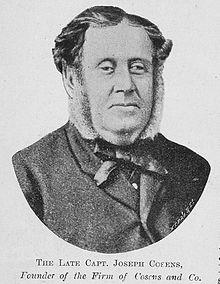
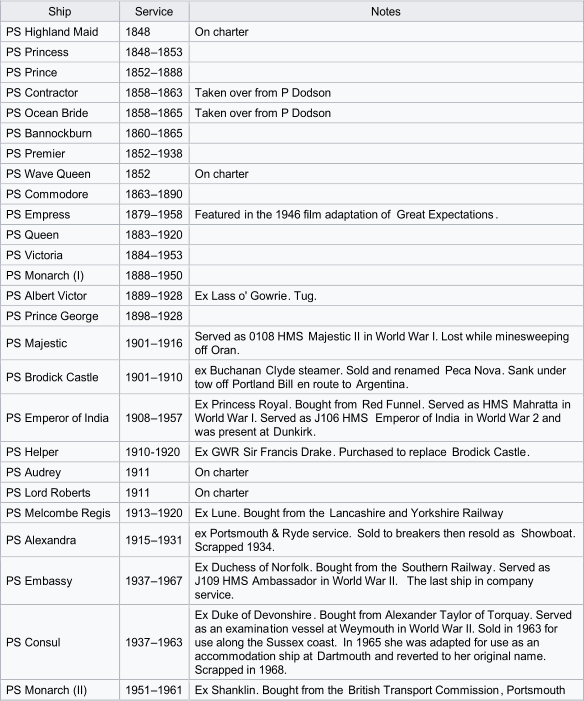
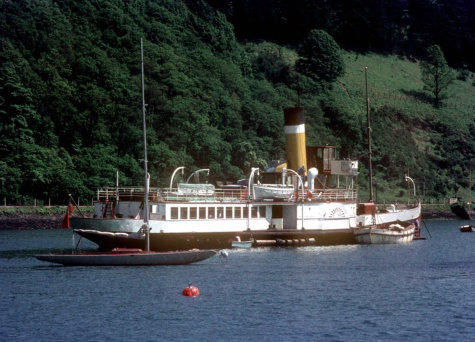

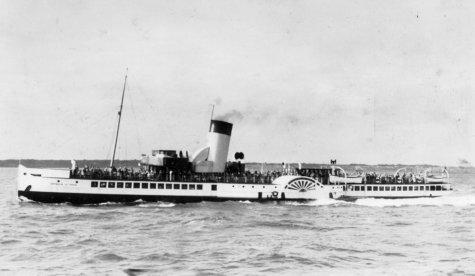
World War 2
Weymouth was host to over half a million troops and nearly 150,000 vehicles that departed the town in less than a year towards the
end of the War in Europe. This of course included a major participation in troops leaving to fight in ‘The Longest Day’, the D-day
invasion of occupied Normandy. The US 1st Division (‘The Big Red One’) crammed on to vessels in Weymouth and Portland harbours
prior to setting sail for France and the assault of Omaha Beach. The infantry were loaded on to small landing craft in Weymouth and
ushered out to the larger transporter ships lying at anchor in Weymouth Bay while Portland played host to the larger hardware, tanks,
guns, trucks, amphibious vehicles and other equipment.
There is a cenotaph on the esplanade commemorating United States soldiers who left Weymouth to fight on the landing beaches in
France during D-Day. The Majority of the American assault force left from Weymouth and Portland Harbours. Over 144.000 vehicles
and over 517.800 troops left the harbours from the 6th of June to the 7th of July 1944. On the cenotaph are plaques and texts which
refer to D-Day, to the Rangers who fought on Point du Hoc and the beaches and spearheaded the assault, to Exercise Tiger and to the
sinking of the passenger ship Leopoldville.
WEYMOUTH PORT

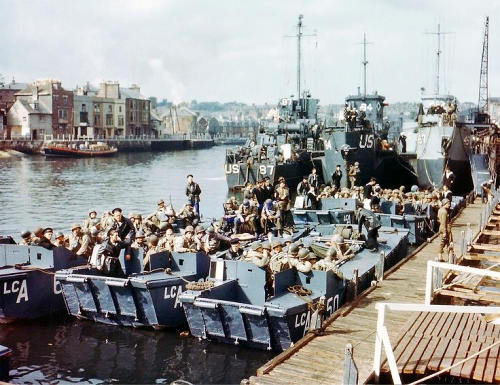
World War 1
At the outbreak of World War 1 Weymouth was a popular
seaside resort made fashionable as a watering-place by King
George the Third. It also had military connections with the
nearby naval base of Portland and several army camps & forts
from the Napoleonic period.
Following the landing of Australian & New Zealand troops, the
ANZACs, at Gallipoli on 25th April 1915, casualties mounted
rapidly. Tens of thousands of wounded were sent to England.
where there was no Australian base to which they could report
once they had been discharged from hospital. What was
needed urgently was a base where troops could be sent to
convalesce. So, on 31st May 1915, a command depot was set
up at Monte Video House in Chickerell, some two miles from
Weymouth.
The depot was the joint Australian and New Zealand depot until the NZ depot opened at
Hornchurch in Essex in April 1916. Weymouth then became the Australian Imperial Forces (AIF)
Command Depot No.2 which accommodated those men not expected to be fit for duty within six
months. As a result, during the years 1915-1919, over 120,000 Australian and New Zealand
troops passed through Weymouth. In spring & summer Weymouth Esplanade would be full of
Anzac soldiers in wheelchairs, being wheeled along by their more able mates.
The ANZAC Memorial on Weymouth seafront commemorates the Australian and New Zealand
troops who were accommodated in three camps in the town during WW1 - Monte Video,
Westham and Littlemoor. In Weymouth and Melcombe Regis Cemetery there are about eighty-
six graves of those Anzacs who were never to return to their homelands. Also in memory of
these troops, there are a number of roads close to the camps named after Australian cities and
states.

Sydney Hall Military Hospital 1914
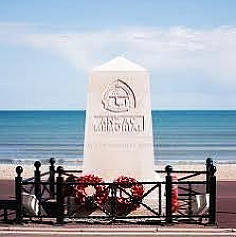
Weymouth’s ANZAC Memorial
HISTORIC SHIPS


